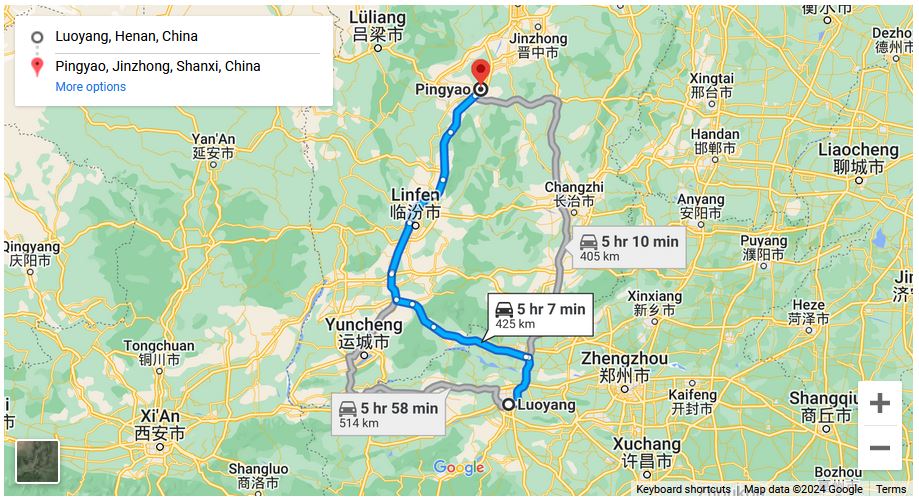The journey from Luoyang to Pingyao is a voyage through time, connecting two Chinese cities that have played pivotal roles in the nation’s long and storied history. As one leaves the ancient capital of Luoyang, steeped in millennia of cultural and spiritual significance, and travels towards the well-preserved medieval town of Pingyao, the landscape transforms, offering a glimpse into different eras of China’s past.
Luoyang, with its deep historical roots, is often regarded as the cradle of Chinese civilization. The city’s heritage is intricately tied to the rise and fall of dynasties, the spread of Buddhism, and the flourishing of arts and culture. Leaving Luoyang, the journey unfolds through the picturesque landscapes of Henan Province, revealing the tranquil beauty of rural China with its lush fields and traditional villages.
One of the noteworthy stops along the way is the ancient city of Qikou, situated along the Yellow River. Qikou, with its well-preserved architecture from the Ming and Qing dynasties, provides a glimpse into the historical importance of river trade during ancient times. The narrow cobblestone streets, traditional courtyards, and ancient merchant houses stand as silent witnesses to the bustling trade that once defined this riverside town.
Continuing the journey, the landscape transitions to the Yellow Plateau, a region marked by undulating hills and terraced fields. This region is not only agriculturally rich but also bears witness to the slow-paced rural life that has persevered through the ages. Small villages dot the landscape, allowing travelers a chance to witness the simplicity and charm of traditional Chinese rural living.
As one approaches Pingyao, the scenery shifts once again, unveiling the ancient city’s well-preserved city walls and Ming and Qing dynasty architecture. Pingyao is a UNESCO World Heritage site, renowned for its remarkably intact cityscape that transports visitors back to the medieval period of China. The imposing city walls, constructed in the 14th century, encircle the entire town and provide panoramic views of the surrounding landscape.
Pingyao’s ancient streets, lined with courtyard residences, traditional shops, and historic temples, evoke a sense of stepping into a bygone era. The city’s layout reflects the principles of traditional Chinese urban planning, with its emphasis on harmony, balance, and feng shui. The Rishengchang Exchange House, considered the first bank in China, is a testament to Pingyao’s historical significance as a thriving financial center during ancient times.
Exploring Pingyao’s well-preserved sites, such as the Wang Family Courtyard and the Shuanglin Temple, offers a comprehensive understanding of the town’s cultural heritage. The Wang Family Courtyard, a sprawling complex of courtyards and buildings, showcases the architectural prowess of the wealthy Wang family during the Qing Dynasty. The Shuanglin Temple, adorned with exquisite painted sculptures and murals, provides insight into the religious and artistic achievements of the region.
The journey from Luoyang to Pingyao is not merely a physical distance covered; it is a cultural and historical odyssey that traverses landscapes and epochs. It is a passage through the annals of Chinese civilization, from the ancient capital’s spiritual and imperial grandeur to the meticulously preserved medieval town that embodies the essence of a bygone era. This journey encapsulates the timeless spirit of China, inviting travelers to appreciate the continuity of its rich history amid the evolving landscapes.

